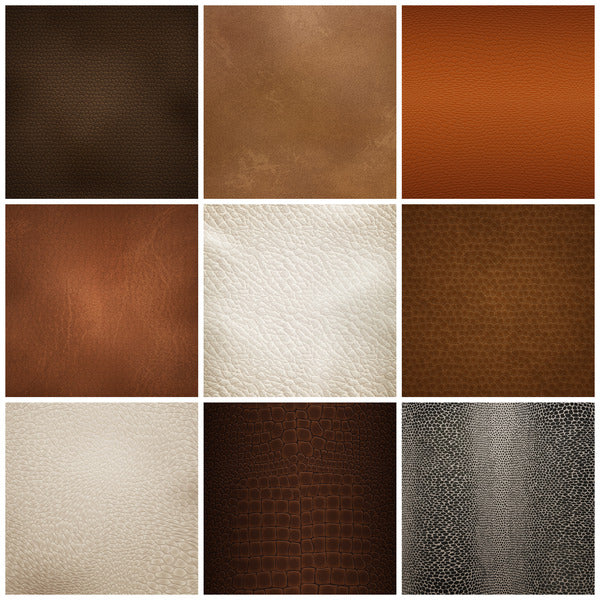Did you know that belts have been used for centuries? Not only do belts link pants to tops, it is likewise a fashion icon. However, nowadays, consumers simply cannot tell if the material used in belts is genuine leather or not. On some of the major shopping sites, there are many sellers who claim that their belts are genuine leather. But is this true?
Genuine leather, such as the high quality leather used by BELTBUY, is a natural product. It is characterized by its natural beauty, texture and durability. Artificial leather, on the other hand, is a synthetic alternative made from various polymers and is often used as a cost-effective alternative to genuine leather.
The differences between these two materials are reflected in various aspects such as appearance, texture, durability, environmental friendliness and price.
Definition of leather
Leather is a natural material made from animal skins that are preserved through the process of tanning. Tanning uses strong chemicals to prevent the leather from decomposing, and the quality of the leather depends on the age, weight and origin of the animal.
Wikipedia also explains tanning in relation to tanning: "Tanning or rawhide tanning is the process of treating animal hides to produce leather. A tannery is a place where leather is processed."
To learn more, you can check out Wikipedia's related explanations
Types of leather
Imagine an animal hide. This leather can be divided into different layers, each with unique properties that determine the final type of leather. These layers are just the starting point.
Full grain leather
Full grain leather is the best quality leather you can find. It is mainly made up of the first layer of the animal's skin. Full grain leather is the strongest and most durable variety. You can't damage it by trying to puncture, rip, peel or crack it. It is highly preferred by consumers.
Top Grain Leather
This leather is virtually indistinguishable from full-grain leather. However, this is the second layer of the leather rather than the top layer. A key difference is that these leathers are buffed or polished to eliminate imperfections and inconsistencies. As a result, head-grain leather is softer and more comfortable to use than full-grain leather.
Genuine Leather
Corrected or split leather is an alternative name for genuine leather. Because it sits at the end of the chain, this leather is the thickest and strongest of the bunch. The leather is then treated to provide a more consistent finish. Both blocking and sanding are used to smooth the surface. The final look of the leather is achieved by embossing, stamping, painting or dyeing.
Bonded Leather
Another name for bonded leather is recycled leather. Rawhide trimmings or edgings are finely crushed and mixed with fillers to make leather. This type of leather, which has a lower status in the market, is not usually chosen by consumers.
Faux Leather
Faux Leather is known as artificial leather, it is based on the cost of production and ethics, it is completely man-made, without the use of animal fur or leather.
So, what method should we use to verify if the leather is real? We can look at the following aspects:
Visual Cues
We can look at the surface of the leather to see if there are natural imperfections, variations in grain and uneven colors. Genuine leather has a unique texture with natural imperfections such as pores, wrinkles and grain patterns. These are usually absent or less noticeable in man-made leathers. Run your fingers over the surface to feel the grain. Genuine leather will feel soft and slightly warm, while fake leather may feel cool and smooth.Touch Test
Genuine leather is soft, supple and slightly uneven, with imperfections such as wrinkles, pores and variations in grain pattern. You can also gently press your finger on the leather to see creases and wrinkles.Smell Test
The odor of leather comes from the natural ingredients used in the vegetable tanning process. These ingredients include bark, plants and other natural materials. Artificial leather may have a chemical or plastic-like odor, especially if it is new. Cheap faux leather may smell like plastic or chemicals, but high-end vegan leather usually has no odor at all.Water Test
This test is also known as the water absorption test. The treatment is such that a drop of water should soak into the leather, rather than bead up. Note, however, that some treated leathers may initially be water resistant.
In 2020, Hicham Mahfoz Kotb 1,2,*, Mohamad M. Ahmad 1,3ORCID, Adil Alshoaibi 1ORCID andKoji Yamada 4 et al. published a paper on the methodology related to the water absorption test: An Approach to Leather Differentiation Using Attenuated Total Reflectance Fourier Transform Infrared Spectroscopy (ATR-FTIR) and Chemometrics. For your reference.
Absolutely! It's important to recognize that advances in synthetic leathers have made them extraordinarily realistic. Some high-quality synthetics can even mimic the look and feel of real leather very convincingly.
Alternative Tip:
While the sensory test is a good starting point, there are other ways to boost your confidence in recognizing genuine leather:
Check the label: Many leather belts are proudly labeled with a description of the material. Look for terms such as "100% leather" or "full grain leather". Consult a trusted retailer: If you are still unsure of the material of the belt, feel free to ask a salesperson. Reputable retailers should have a clear understanding of their products and be able to provide accurate information.
Conclusion:
By combining these tips and using your senses, you will be empowered to navigate the world of belts. Keep in mind that there are several benefits to knowing how to recognize genuine leather:
Durability: leather belts are known for their durability. When properly cared for, they can last for years, making them a worthwhile investment. Investment value: unlike popular faux leather options, leather belts retain their value and can even become valuable heirlooms. Timeless style: belts have a timeless, sleek and classic aesthetic that can enhance your closet for years to come.
